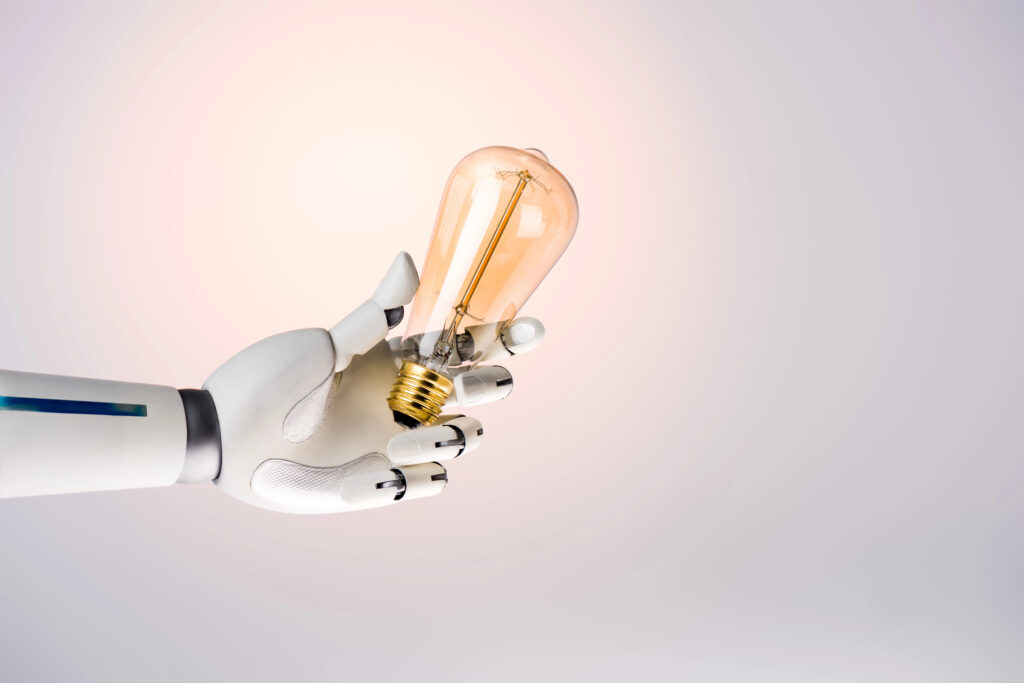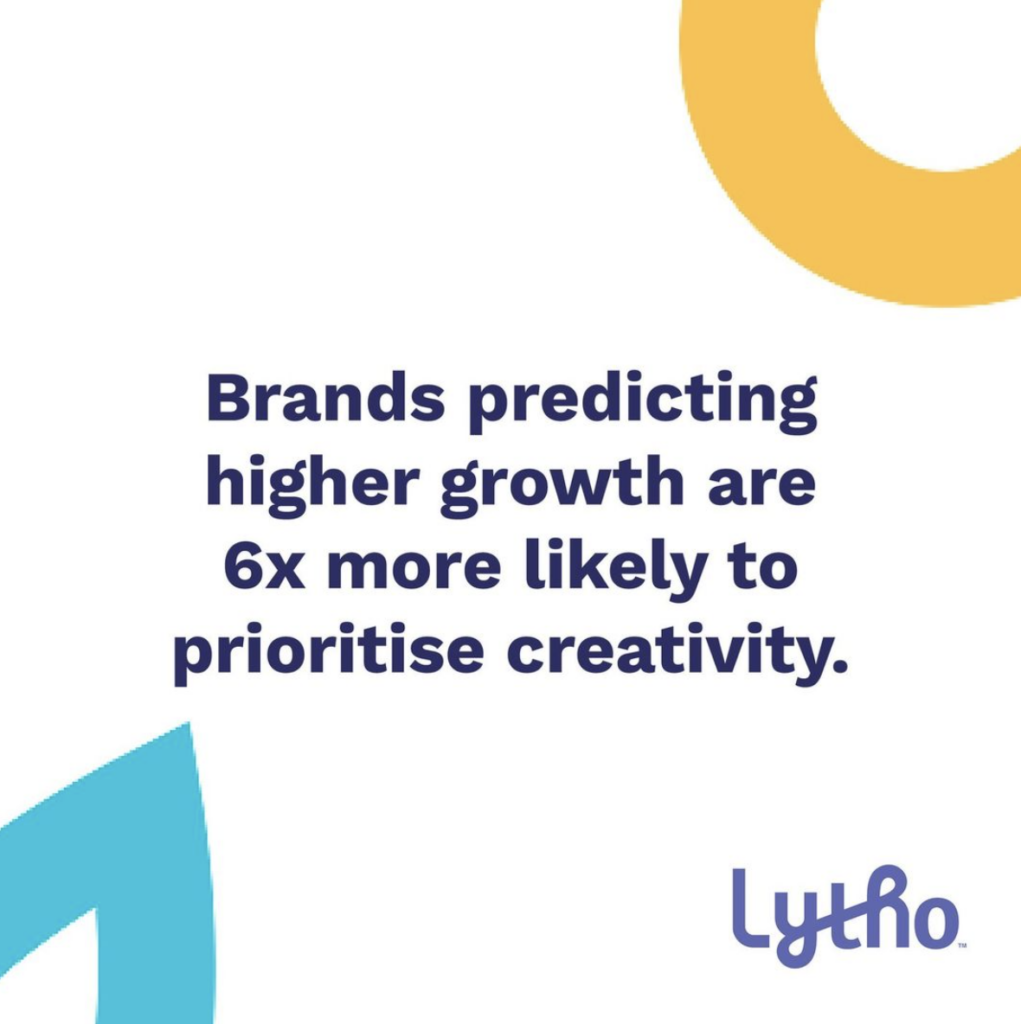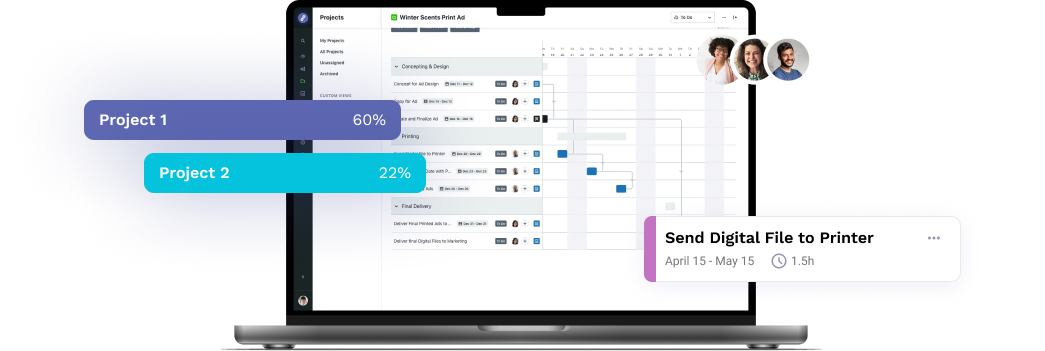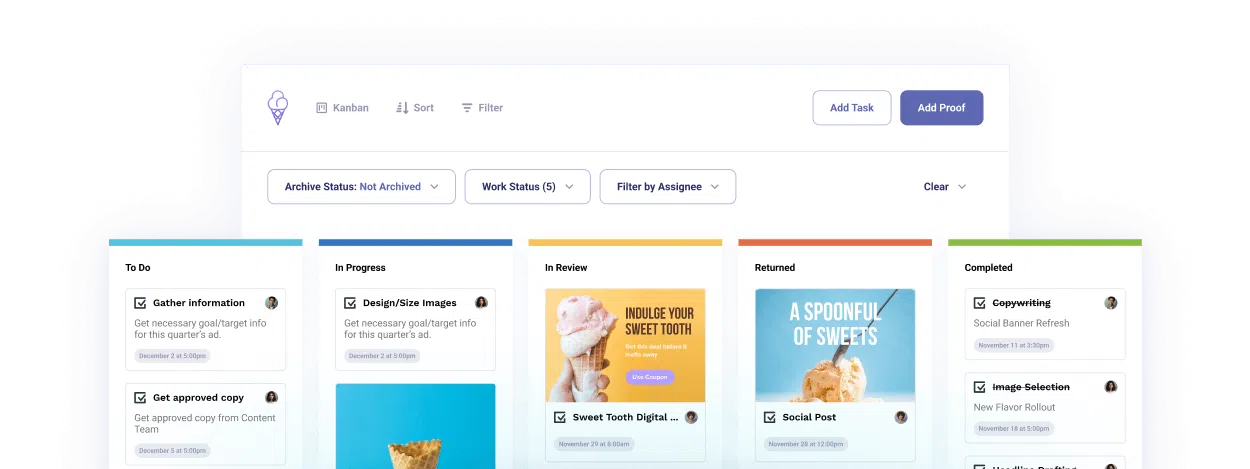
The demand for creative assets is skyrocketing, with brands needing to produce more content than ever before. As consumers’ appetite for fresh and engaging material grows, creative and marketing professionals find themselves in a constant race to keep up. The variety of formats and platforms further complicates this challenge, requiring a diverse range of creative outputs.
In such a dynamic and demanding environment, the solution lies in creative automation.
What Is Creative Automation?
We thought you might ask. Creative automation refers to the use of technology to streamline and enhance the creative process, making it more efficient, consistent, and scalable. It involves leveraging tools and software to automate repetitive tasks, freeing up creative teams to focus on higher-level, strategic work. (You know, the fun stuff.)
Notably, brands predicting higher growth are 6x more likely to prioritize creativity.

Creative automation is transforming the way businesses approach marketing, enabling them to produce high-quality content at scale without compromising on creativity.
Maximizing Creativity With Creative Automation
Challenges of Traditional Creative Processes
Traditional creative processes often face several challenges that can hinder productivity and innovation. These include:
-
Bottlenecks and Inefficiencies: Manual processes can create significant bottlenecks, slowing down the production of creative assets. Tasks such as resizing images, adapting designs for different platforms, and managing multiple versions of files are time-consuming and prone to human error.
-
Lack of Consistency and Alignment: Ensuring that all creative outputs align with brand guidelines and messaging can be difficult when relying on manual processes. Inconsistencies in design, tone, and quality can dilute the brand’s identity and confuse the audience.
How Creative Automation Addresses These Challenges
Creative automation offers solutions to these traditional challenges by streamlining workflows, enhancing creativity, and ensuring consistency. Here’s how:
-
Streamlining Workflows: By automating repetitive tasks, creative automation reduces the time and effort required to produce high-quality creative assets. For example, tools can automatically resize images, generate multiple versions of ads, and organize digital assets. This streamlining of workflows allows creative teams to focus on more strategic and innovative tasks.
-
Enhancing Creativity: Automating mundane tasks frees up creative professionals to spend more time on ideation and creative thinking. With the repetitive work taken care of by automation tools, teams can experiment with new ideas, explore different design concepts, and push the boundaries of their creativity.
-
Ensuring Consistency: Automating production also ensures that all creative outputs adhere to brand guidelines and standards. Automated processes can enforce consistency in design, tone, and messaging across all channels and campaigns. This not only strengthens the brand’s identity, but also enhances the overall customer experience.
Implementing Creative Automation
Steps to Get Started
Implementing creative automation involves several key steps to ensure a smooth transition and maximize the benefits. Here’s a guide to get started:
-
Assess Current Workflows: Begin by evaluating your existing creative processes to identify areas that can benefit from automation. Look for repetitive tasks, bottlenecks, and inefficiencies that can be streamlined.
-
Identify Automation Opportunities: Determine which tasks and processes can be automated. This might include resizing images, generating different formats of creative assets, managing digital assets, and ensuring brand consistency across various channels.
-
Select the Right Tools and Technologies: Choose a creative automation platform that fits your organization’s needs. Consider factors such as ease of use, integration capabilities, scalability, and specific features that align with your workflow requirements.
Best Practices for Successful Implementation
To ensure successful implementation of creative automation, follow these best practices:
-
Set Clear Goals and Objectives: Define what you aim to achieve with creative automation. Establish clear metrics to measure success, such as time saved, increased productivity, or improved brand consistency.
-
Involve Stakeholders Early: Engage key stakeholders from the beginning to ensure buy-in and address any concerns. This includes creative teams, marketing departments, and IT support.
-
Provide Training and Onboarding: Equip your team with the necessary skills and knowledge to use the new tools effectively. Conduct training sessions and provide ongoing support to help them adapt to the automated processes.
-
Monitor and Optimize: Continuously monitor the performance of your creative automation tools and workflows. Collect feedback from users and make adjustments to optimize efficiency and effectiveness.
Creative Automation Tools and Technologies
Creative automation relies on various tools and technologies that streamline the creative process. Here’s an overview of some of the leading tools available:
Digital Asset Management (DAM) Systems
These systems provide a centralized repository for storing, organizing, and retrieving digital assets. They ensure that creative teams have easy access to the latest versions of assets, reducing time spent searching for files. Key features often include version control, metadata tagging, and rights management.
Advanced DAM systems also incorporate AI-based tracking technologies like Lytho Tracks, which monitor asset usage and distribution online to enhance control and optimize marketing efforts.
Template-Based Design Tools
Tools like Canva and Adobe Spark offer pre-designed templates that can be customized and adapted to different formats and channels. Templates ensure consistency in design and branding while speeding up the creation of new assets.
Automated Workflow Platforms
Lytho’s Creative Workflow software enables the automation of repetitive tasks and the management of creative projects, which in turn facilitates collaboration, task assignment, and deadline tracking, ensuring that projects stay on schedule.
AI and Machine Learning Tools
Advanced AI-driven tools can analyze data and provide insights to enhance creative decision-making. Examples include Adobe Sensei, which can suggest design elements and optimize layouts, and Phrasee, which generates content variations based on performance data.
Benefits of Using Lytho’s Solutions
Lytho offers a suite of creative automation solutions designed to streamline the creative process and enhance productivity. Here are some of the benefits of Lytho’s platform:
-
Efficiency and Productivity: By automating repetitive tasks and streamlining workflows, Lytho’s solutions help creative teams work more efficiently and productively. This allows them to focus on strategic and high-value activities.
-
Consistency and Brand Integrity: Lytho ensures that all creative outputs adhere to brand guidelines, maintaining consistency and integrity across all channels and campaigns.
-
Scalability: Lytho’s platform supports scalable content production, enabling businesses to grow their creative efforts without a proportional increase in resources.
-
Enhanced Collaboration: Lytho’s tools facilitate collaboration between team members, ensuring that everyone is aligned and working towards common goals. This improves communication and reduces the risk of misalignment.
The Future of Creative Automation
The field of creative automation is rapidly evolving, driven by advancements in technology and changing market demands. Here are some of the emerging trends that are shaping the future of creative automation:
AI and Machine Learning
The integration of AI and machine learning into creative automation tools is becoming increasingly sophisticated. These technologies can analyze large datasets to:
-
Provide deeper insights
-
Predict trends
-
Automate complex tasks
For example, AI can now generate personalized content variations based on audience preferences and performance data.
Integration with Marketing Technologies
Creative automation tools are being integrated with other marketing technologies, such as Customer Relationship Management (CRM) systems, Marketing Automation Platforms (MAPs), and Content Management Systems (CMS). This integration allows for seamless workflows and more cohesive marketing strategies, ensuring that creative outputs are closely aligned with overall business goals.
Real-Time Collaboration
As remote work becomes more prevalent, the demand for real-time collaboration tools is increasing. Creative automation platforms are incorporating features that facilitate real-time collaboration, enabling teams to work together seamlessly, regardless of their location. This includes live editing, instant feedback, and synchronized updates.
Enhanced Personalization
Personalization is becoming a key focus in creative automation. Tools are now capable of creating highly personalized content at scale, tailoring messages and designs to individual preferences and behaviors. This level of personalization enhances customer engagement and improves the overall effectiveness of marketing campaigns.
Embrace the Future of Creative Automation With Lytho Today
Creative automation is revolutionizing the way businesses approach content creation, offering unparalleled efficiency, consistency, and scalability. By embracing these advanced tools and technologies, companies can enhance their creative processes and stay ahead in a competitive market. As the field continues to evolve, the potential for innovation and impact through creative automation is limitless.
Ready to transform your creative process and maximize productivity? Discover how Lytho’s Creative Workflow software and digital asset management solutions can streamline your operations. Schedule a demo with Lytho today and see the difference creative automation can make for your team.
Do you want to give yourself and your creative team more room for creative stimulation by automating the boring stuff? Lytho helps you streamline your entire workflow and harmonize all brand collateral under a single, uniform platform. Feel free to reach out to us by scheduling a demo and learning how our creative solutions can boost the effectiveness of your creative projects. We look forward to speaking with you!

Ready to simplify your creative operations and start having a little fun at work again? Schedule time to talk with us.
Let us show you how Lytho’s Creative Operations Platform helps in-house creative and marketing teams do better work, ease the stakeholder experience, and stay on brand.
Schedule a Demo posted by
posted by 
